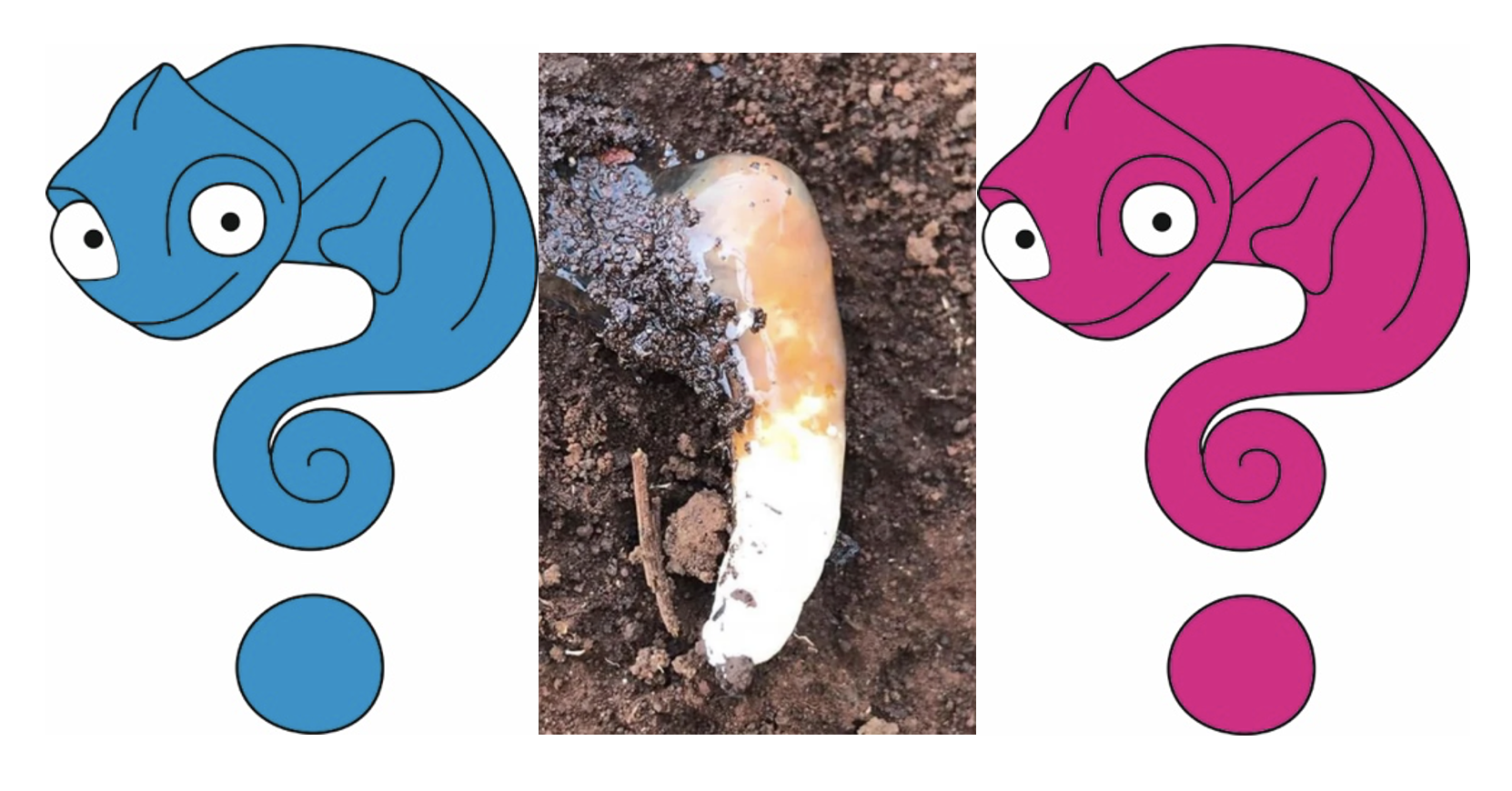Myth 21: “Completely White Urate Is Good”

Mistake: It's a widespread belief that completely white urate in chameleons is a sign of perfect hydration. And while it may seem logical, this belief is not true—and can even be misleading.
What Is Urate?
Urate is the solid or semi-solid excretion produced by the kidneys. It's the reptile equivalent of urine, but instead of liquid, it's a paste-like substance. In healthy chameleons, urate is typically composed of:
A white toothpaste-like fraction (mainly nitrogenous waste)
An orange crystalline tip (reflecting metabolic byproducts)
Occasionally, a small liquid portion (actual urine)
This composition reflects a balanced hydration and metabolic state.
Why Pure White Isn't "Good"
NO, completely white urate is NOT normal. Completely white, with no trace of yellow or orange, can indicate:
- Overhydration
- Flushed kidneys
- Imbalanced hydration cycles
- Misinterpreted health status
An orange part is not a problem comprosont 15 to 50% of the urate volume—it's a sign of normal waste processing. In fact, the obsession with "pure white" urate has led to overhydration, misdiagnosis, and unnecessary interventions.
Kidney Health in Captivity
In captivity, chameleons' kidneys are frequently damaged or stressed due to poor dietary practices.
Two major causes:
Excess Phosphorus
Farmed feeders (crickets, mealworms, superworms) contain high phosphorus levels.
This must be neutralized by supplementing with calcium to reach a Ca:P ratio of 2:1 or higher.
Failure to correct this leads to kidney strain, metabolic bone disease, and renal failure.
Excess Uric Acid
Diets rich in purines, especially heavy feeding of roaches, cause elevated uric acid levels.
This burdens the kidneys and can lead to gout, chronic dehydration symptoms, and organ damage.
The Origin of the White Urate Myth
This myth was introduced by veterinarians in the US decades ago, and has been parroted ever since—without any supporting evidence from wild populations or controlled captive studies.
It became a standard talking point in care sheets and forums, despite lacking biological nuance or scientific validation.
What You Should Look For Instead
Don't judge hydration by urate color alone. Instead, assess the whole picture:
Skin elasticity
Activity level
Eye condition
Weight and muscle tone
Frequency and consistency of urates
Mucous membrane moisture
Appetite and behavior
A chameleon with completely white urates but dry skin, sunken eyes, and low energy is not hydrated well—it's just excreting clean waste.
The Bottom Line
Hydration is not binary. It's a dynamic balance. And urate color is just one small clue—not a definitive answer.
So don't celebrate pure white urate as a trophy. Look deeper. Think broader. And always assess hydration with multiple indicators, not just one.
Happy Ending
When you understand your chameleon's biology—not just the myths—you'll make smarter choices. You'll avoid overwatering, underhydrating, or misreading signs. And your chameleon will thrive—not just survive.